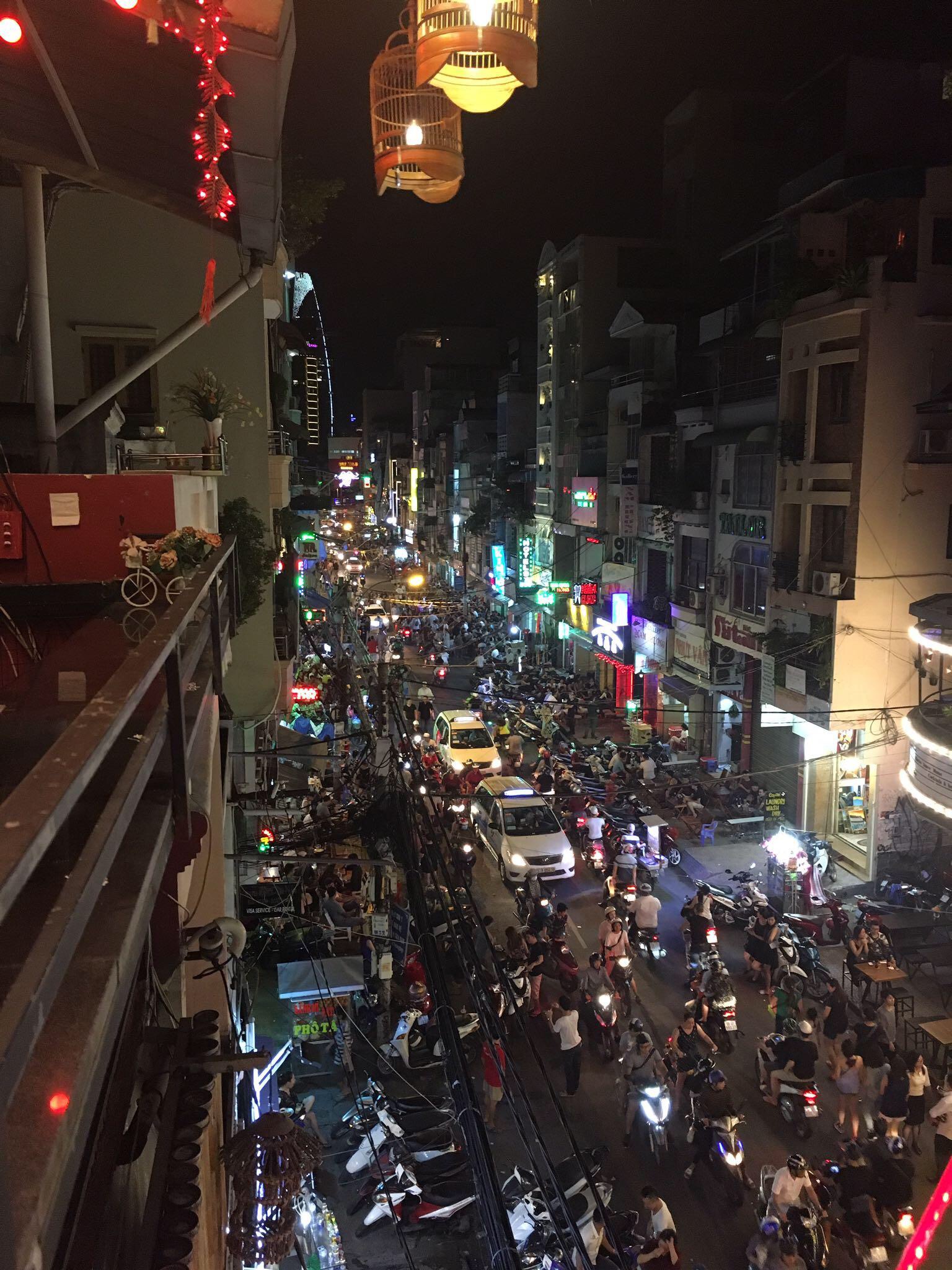Vietnam, Ho Chi Minh City
FC-01x Future Cities (Self-Paced) - Exercise 1 : "Making the Invisible - Visible"

Uploaded on 2017-08-08 by Mike Scheer
In this picture, we see a street of Saigon, Vietnam (now named Ho Chi Minh City). I traveled to Vietnam recently, and took this picture. Some of the visible information in this image are a multitude of motorbike riders, two large taxis, electric lamps hanging outside of a restaurant, pedestrians eating on the street, small vendors selling items along the traffic-riddled avenue, strings of "holiday" style lights hanging from balconies on both sides of the street, buildings connected but each with their own individual design and style, several brightly colored advertisements, etc. Two pieces of invisible information that can be derived from this photo are 1- that each of the motorbikes and taxis on this street are giving off exhaust and using gasoline and 2- that though the buildings are each designed differently and connected, they also each seem to have a restaurant on the ground floor and what appear to be apartments or residences on upper floors, with some containing 4 and other buildings 5 or more floors. With the invisible information that the cars and motorbikes are each consuming energy and emitting harmful exhaust into the air, we can derive knowledge that the air quality in this section of the city is likely not great. In fact, in Saigon, over 7 million motorbikes are driven every day. And, most drivers wear face masks to prevent pollution and harmful exhaust from getting into their respiratory system. This knowledge is bad news for the health of the urban environment. It seems that there are simply too many vehicles and too much air pollution, which is clearly lowering the standard of life in Saigon. Solutions around the world, in places like Chicago and Rome, include widespread public transportation use and carpooling. However, this is uncommon in Saigon. The accessibility (fiscally and geographically) of motorbikes leads people to rely on them for daily commutes to work and shopping, etc. This knowledge, if it could be studied further, I believe could lead to either an infrastructural change to Saigon's public transportation, or an incentive to reduce air pollution by reducing the number of motorbikes that drive through the city on a daily basis. This knowledge, possibly mapped out, compared to traffic lights and flows, and in relation to working locations and living locations, could provide a basis for a solution and action. Mike Scheer